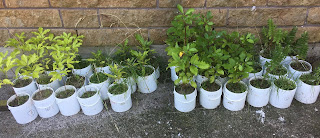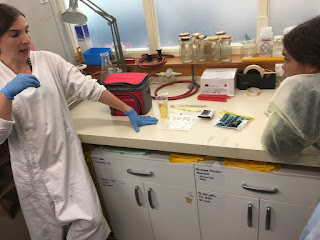Testing the effect of grey water on native plants: What the results from the 2018 growing trial tell us
 |
| The trees and shrubs three months after the experiment (From left) 4. Wharangi, 1. Kohekohe, 3. Five finger, 2. Kokomuka |
There was some difference in the sizes of the trees at the start of the experiments, especially those involving the Kohekohe and Five finger tree samples, which made it slightly harder to compare the effect of the watering regimes on the average growth of the plants. However, if the average growth rates (slope of the graph lines) are compared then there does not appear to be much difference in the growth of the trees under any watering conditions, except for Kohekohe. This would suggest that Kohekohe would not be a suitable choice for a wetland area designed to treat grey water. The results are shown below. It is more likely that a 'dip' in a graph represents a measuring error rather than any shrinkage in plant size.









Comments
Post a Comment